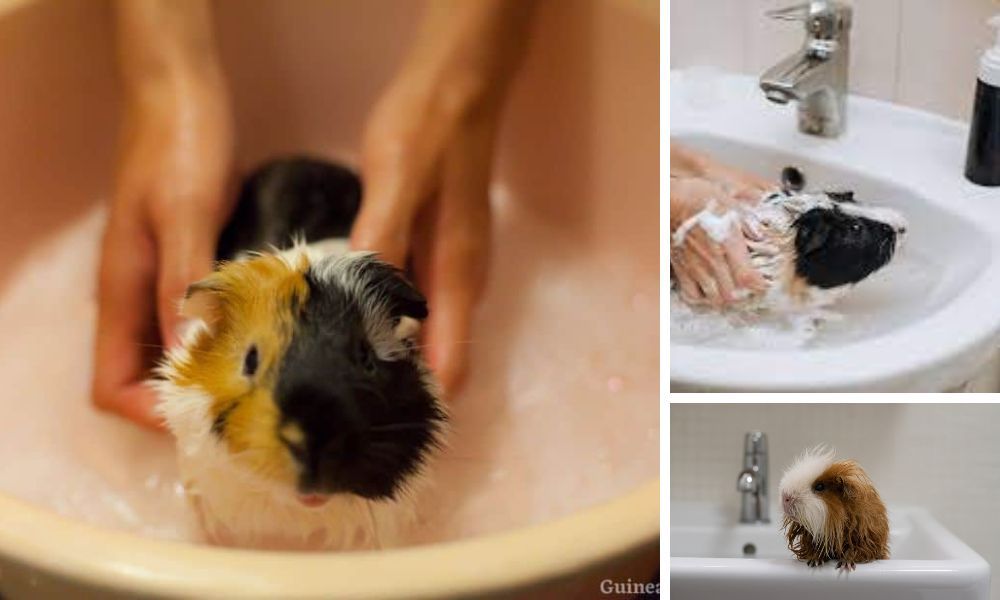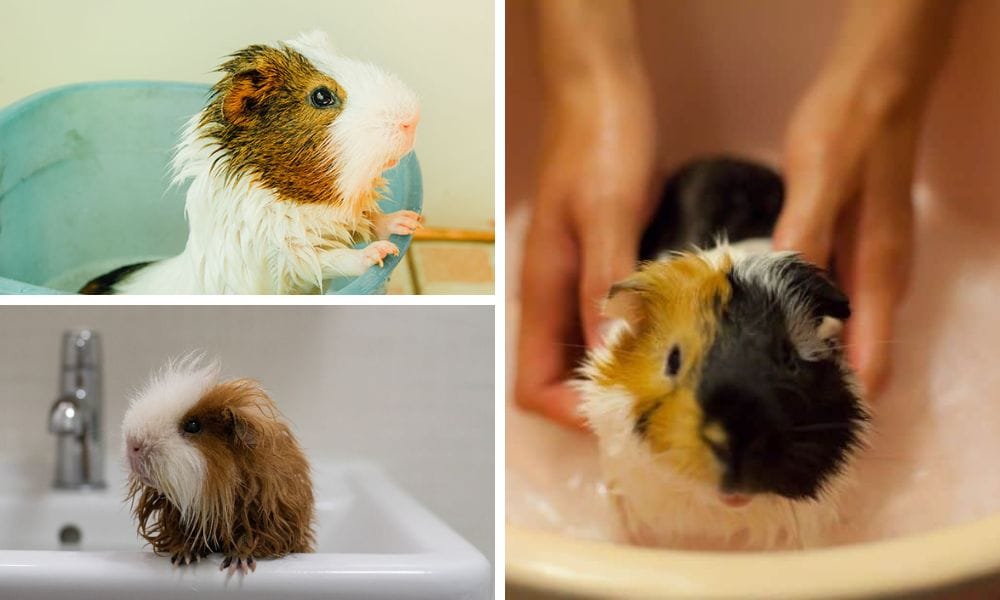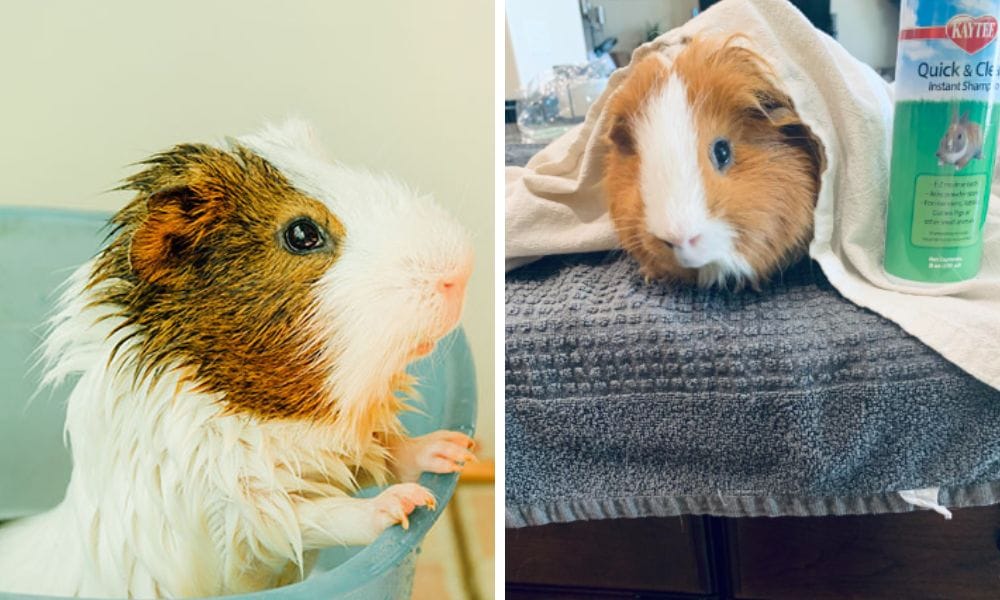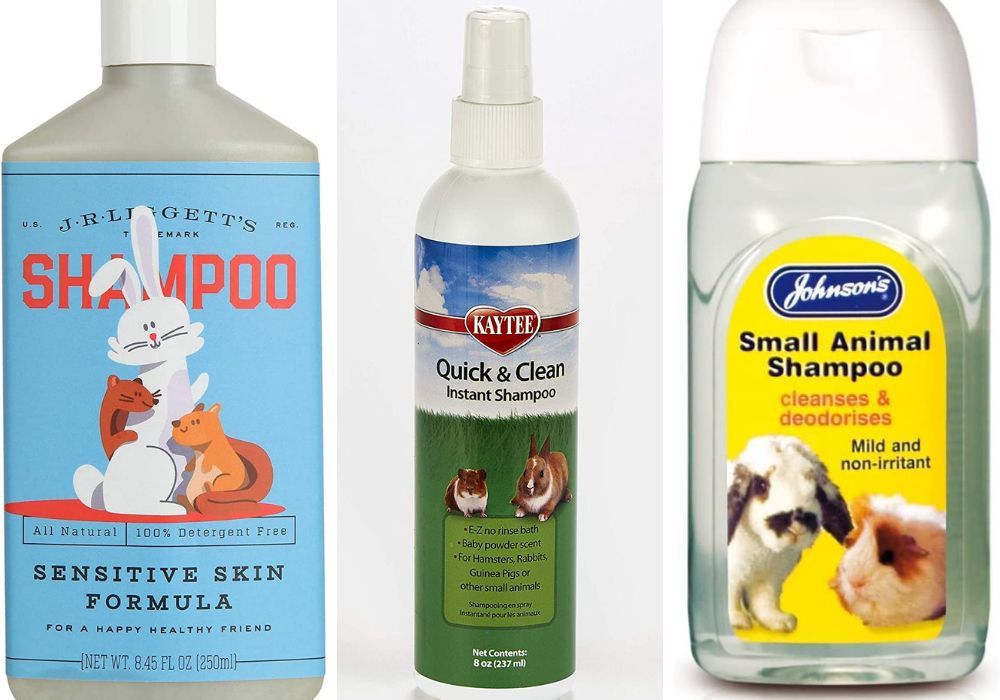The Ultimate Guide to Guinea Pigs Grooming to Stay Healthy and Happy
In this blog, we are going to show you how to groom your guinea pig like a professional so that he or she stays healthy and happy!

Guinea pigs are adorable, sociable pets that bring joy to their owners with their playful antics and endearing personalities. However, to keep these small animals healthy and happy, regular grooming is essential. This comprehensive guide will walk you through the ins and outs of grooming guinea pigs, ensuring that your furry friend remains in tip-top shape.
Key Takeaways:
- Regular Grooming is Crucial: Establishing a grooming routine is vital for your guinea pig's overall health, affecting everything from their fur to their nails.
- Know Your Breed: Different breeds, like short haired guinea pigs and long haired guinea pigs, require varying grooming care.
- Be Prepared: Having the right tools and knowledge, such as how to safely trim nails or clean guinea pig ears, can make the grooming process smoother for both you and your pet.
Understanding Your Guinea Pig's Grooming Needs
Grooming guinea pigs is not just about keeping them looking their best; it's an essential part of their care. Regular grooming helps prevent health issues such as matted fur, overgrown nails, and skin infections. Most guinea pigs will enjoy the attention during grooming, and it also provides an excellent opportunity for you to bond with your pet.
The Right Tools for the Job
Before you start grooming your guinea pig, ensure you have the necessary tools. You'll need nail clippers or scissors specifically designed for small animals, a soft brush for their coat, guinea pig safe shampoo for occasional baths, and styptic powder in case you accidentally cut a nail too short. Try to clip your guinea pig's nails at least once a month. For long haired breeds, hair scissors may be required to trim longer hair.
Step by Step Guide to Brushing
Brushing is a fundamental aspect of guinea pig grooming, especially for long haired guinea pigs. Use a soft brush to gently remove loose hair and prevent matting. For short haired guinea pigs, brushing once a week may suffice, but long haired breeds might need daily attention to keep their coat free from tangles.
Bathing Your Guinea Pig
Guinea pigs do not need to be bathed very often; in fact, it's best to only bathe them when absolutely necessary. If your guinea pig gets really dirty or smelly, you can give them a bath using warm water and a mild soap (make sure it's one that's safe for animals). Gently massage the soap into their fur, making sure to keep their eyes and ears dry. Rinse off the soap with warm water and then use a towel to dry them off as much as possible before letting them air-dry the rest of the way. If you are interested in How to gently clean you guinea pig with shampoo click here.

Nail Trimming: A Delicate Process
Nail trimming is an essential part of grooming guinea pigs. Overgrown nails can cause discomfort and even lead to health issues. To safely trim your guinea pig's nails, gently hold their foot and cut the sharp ends, avoiding the blood vessel known as the "quick." For dark colored nails, use a flashlight to better see the quick and prevent accidental cuts.
Caring for Your Guinea Pig's Ears
Guinea pig ears require a gentle clean to remove any buildup of ear wax or dirt. Use a soft cloth or cotton ball dampened with warm water to wipe the outer ear. Never insert anything into the ear canal, as this can cause injury. Check regularly for signs of ear mites or infections, which may require veterinary attention.
Dental Care for Guinea Pigs
Guinea pigs' teeth continuously grow throughout their lives, so it's crucial to provide them with ample hay and chew toys to help wear down their teeth naturally. Regularly check your guinea pig's teeth for overgrowth or misalignment, which can lead to difficulty eating and require professional care.

Grooming Long-Haired Guinea Pigs
Long-haired guinea pigs are the epitome of fluffiness, but their beautiful locks require extra attention. As a piggy parent, you'll find that the hair length of your long-haired guinea pig can quickly become unmanageable if not regularly groomed. Mats and tangles can form, which are not only unsightly but can also cause discomfort and skin issues for your little friend. To prevent this, incorporate a daily brushing routine using a soft-bristled brush. This will help to remove loose hair and prevent matting, ensuring your guinea pig's fur remains smooth and tangle-free.
When it comes to trimming the hair of a long-haired guinea pig, it's essential to do so with care. You might want to consider using rounded-tip scissors to avoid any accidental nicks on your guinea pig's skin. Keep the hair around the bottom especially short to avoid soiling, which can lead to infections or attract flies during warmer months. Regular haircuts not only keep your guinea pig looking neat but also contribute to their overall hygiene and comfort. Remember, a well-groomed long-haired guinea pig is a happy and healthy one!
Comfortable Grooming Environments for Guinea Pigs
Creating a comfortable grooming environment is crucial for both the guinea pig and the owner. Guinea pigs can be skittish creatures, and a calm setting can make the grooming process much smoother. Start by choosing a quiet room, away from loud noises and other pets that might startle your guinea pig. Use a soft towel or a grooming mat where your guinea pig can sit comfortably. This not only provides a non-slip surface but also a sense of security for your pet. Remember, a relaxed guinea pig is easier to groom, making the experience pleasant for both of you.
In addition to a serene atmosphere, ensure that the room temperature is guinea pig-friendly. Guinea pigs are sensitive to extreme temperatures, so maintaining a room that's not too hot or too cold is essential. You can also gently talk to your guinea pig in a soothing voice to keep them calm during grooming sessions. Some piggy parents find that having a routine helps their pets to know what to expect, which further eases anxiety. By creating a stress-free environment, you're not only facilitating grooming but also strengthening the bond with your furry friend.
Grooming Challenges for Long-Haired Breeds
When it comes to guinea pigs grooming, owners of long-haired breeds face unique challenges. The luscious locks of a long-haired guinea pig can easily become matted and tangled if not properly maintained. Regular brushing is essential to prevent these mats, which can cause discomfort and even lead to skin infections. It's important to use a soft brush designed for small animals to gently work through the guinea pig's hair, starting from the ends and gradually working your way to the base to minimize pulling and stress.
Moreover, during shedding seasons, long-haired guinea pigs may require more frequent grooming sessions to manage the extra loose fur. This not only helps to keep their coat looking neat but also reduces the amount of hair they might ingest while self-grooming, which can lead to digestive issues. Owners should be patient and gentle, as the sensation of brushing can be unfamiliar to guinea pigs at first. Over time, with consistent handling and positive reinforcement, your guinea pig can learn to enjoy and even look forward to these grooming sessions.
Integrating Skin and Coat Care into Grooming Routines
A healthy guinea pig's skin and coat are indicators of good health, and integrating skin and coat care into your grooming routine is vital. When grooming your guinea pig's fur, it's a good opportunity to check for any signs of skin irritation, dryness, or parasites that could affect your pet's well-being. Using the right tools, such as a soft-bristled brush, can stimulate the guinea pig's skin and distribute natural oils throughout their coat, promoting a healthy shine and reducing the likelihood of skin problems.
Additionally, while guinea pigs are generally clean animals and do not require frequent baths, occasional spot cleaning with a damp cloth can help maintain the cleanliness of their coat, especially for guinea pigs with lighter-colored fur that may show dirt more easily. Always ensure that any dampness on the guinea pig's skin and fur is thoroughly dried to prevent chilling or skin issues. Remember, a clean and well-groomed guinea pig is a happy and healthy guinea pig, so incorporating these practices into your routine will benefit your furry friend's overall health.
The Benefits of Regular Grooming for Guinea Pigs
Regular grooming is more than just keeping your guinea pig looking good; it's about maintaining their overall health. For instance, frequent brushing of your guinea pig's fur can prevent mats and tangles, especially in long-haired breeds. It also helps to distribute natural oils throughout their coat, keeping their skin healthy. During brushing sessions, guinea pig owners have the opportunity to check for any lumps, bumps, or skin issues that may require veterinary attention. It's a proactive way to catch potential health problems early.
Moreover, regular nail trims are essential to prevent overgrown guinea pig nails, which can lead to discomfort and mobility issues. While trimming, you can inspect their paws for any signs of soreness or infection. Dental care is equally important; by checking on your guinea pig's teeth during grooming, you can ensure they are not overgrown or causing eating difficulties. Remember, grooming is not just about aesthetics; it's a critical component of your guinea pig's health regimen that can significantly impact their quality of life.
The Role of Diet in Guinea Pig Grooming
Believe it or not, a guinea pig's diet plays a significant role in their grooming needs. A balanced diet rich in vitamin C and fiber is crucial for maintaining a healthy guinea pig's skin and coat. Fresh hay, which should be the bulk of their diet, helps to ensure their fur remains lustrous and their skin healthy. Additionally, the act of chewing hay promotes the natural grinding down of guinea pigs' teeth, which continuously grow throughout their lives. This is vital because overgrown guinea pigs' teeth can lead to serious health issues and grooming challenges.
Moreover, vegetables like bell peppers and leafy greens can provide essential nutrients that contribute to a shiny coat and robust health. But it's not just about what they eat—hydration is equally important. Ensure your guinea pig has constant access to fresh water, as it helps to keep their skin hydrated and their coat in good condition. By paying attention to your guinea pig's diet, you're not only fostering their internal health but also reducing the likelihood of grooming problems related to poor nutrition, such as dry skin or a dull coat.
Spotting and Treating Parasites
Regular grooming sessions are an excellent opportunity to check for lice, mites, or other parasites. If you notice any white liquid, dirty patches, or excessive scratching, consult a vet for appropriate treatment. Keeping your guinea pig's living area clean is also essential in preventing infestations.
Handling Your Guinea Pig During Grooming
When grooming guinea pigs, it's important to handle them with care. Support their body, especially their hind legs, to prevent injury. If your guinea pig is nervous, try grooming in short sessions and gradually increase the time as they become more comfortable with the process.

The Importance of a Clean Habitat
A clean living environment is an essential part of your guinea pig's grooming care. Regularly remove feces, soiled bedding, and uneaten food to prevent your guinea pig from becoming dirty and reduce the risk of skin issues. A clean habitat also contributes to your pet's overall well-being.
Seasonal Grooming Considerations
Guinea pigs may require different grooming care depending on the season. In warmer months, they may be more prone to heatstroke, so ensure they are completely dry after baths and keep their habitat cool. During colder seasons, pay extra attention to their bedding to keep them warm and comfortable.
Grooming as a Health Check
Each grooming session is an opportunity to check your guinea pig's body for any abnormalities, such as lumps, bumps, or changes in their skin. Early detection of health issues can make a significant difference in treatment outcomes, so be vigilant during your grooming routine.
When to Seek Professional Grooming Help
If you're uncomfortable with any aspect of grooming, such as nail clipping or hair trimming, don't hesitate to seek professional help. Veterinarians or professional pet groomers with experience in small animals can provide grooming services and advice.
Creating a Grooming Schedule
Establish a regular grooming schedule based on your guinea pig's needs. Short haired guinea pigs may need less frequent grooming than long haired breeds. Consistency will help your pet become accustomed to the process and make grooming sessions more enjoyable for both of you.
Trimming Their Nails
Guinea pigs typically have long nails which should be trimmed every few weeks or so in order to prevent discomfort when walking or climbing on surfaces such as wood floors or ramps. You'll need special nail trimmers designed for small animals—don't use human nail clippers! Trim just the tips of the nails until they look even and rounded without any sharp edges sticking out (try not to trim too close as this can cause pain). If your guinea pig is uncomfortable with having their nails trimmed, you may want to consider having your vet do it instead.
What Types of Grooming Tools Do I Need?
You will need a few basic grooming tools in order to properly care for your pet’s coat. These include a soft brush (ideally made with natural boar bristles), a comb with both wide- and narrow-toothed ends (for brushing out tangles), a spray bottle filled with plain water (for spritzing his coat before brushing), nail clippers (for trimming nails), and an ear cleaner solution or swabs (for cleaning the inside of their ears). You may also want to invest in some gentle shampoo and conditioner specifically formulated for guinea pigs.
What Types of Products Can I Use To Keep My Guinea Pig Looking Its Best?
In addition to using the proper grooming tools mentioned above, there are also several products available that can help keep your pet’s coat looking its best. These include detangling sprays that can help remove knots and tangles from their fur; leave-in conditioners that can make brushing easier; deep conditioning treatments that nourish their skin and fur; hydrating shampoos designed specifically for guinea pigs; and even special scents designed to give your pet’s coat an added boost of freshness.

FAQ Section
How often should I groom my guinea pig?
The frequency of grooming depends on the breed of your guinea pig. Short haired guinea pigs may only need weekly brushing, while long haired breeds might require daily grooming to prevent matting. Nail trimming should be done as needed, usually every 4-6 weeks
Can I bathe my guinea pig with regular shampoo?
No, you should never use regular human shampoo on guinea pigs. Always use a guinea pig safe shampoo that is formulated for their sensitive skin.
What should I do if I accidentally cut my guinea pig's nail too short?
If you accidentally cut the quick and cause bleeding, apply styptic powder to the nail to stop the bleeding. If you don't have styptic powder, cornstarch can be used as a temporary measure. If bleeding persists, contact your veterinarian.
Do all guinea pigs need haircuts?
Not all guinea pigs need haircuts. Many breeds of guinea pigs, such as the Rex and Abyssinian, have short fur that doesn’t need to be trimmed. Long haired guinea pigs, such as the Silkie, Selkirk Rex, and Peruvian may require more frequent grooming and occasional trims to keep their fur looking neat. It's important not to trim too much as this may leave them vulnerable to exposure or chills.
How do you groom a skittish guinea pig?
Grooming a skittish guinea pig can be difficult, but it is possible with patience and the right approach. Start by providing them with a comfortable and safe space to groom them in - this could be a well lit area with soft surfaces for them to stand on. If you have other animals in the house, it’s also important to keep them away. It's also important to make sure that the environment isn't too loud or bright as this may cause additional stress for your guinea pig. Once they are ready, start by slowly introducing simple grooming techniques like brushing their fur or trimming their nails before moving onto more involved tasks such as bathing. Be sure to reward them after each step with a treat or loving attention so they know what they did was good.
Summary
Grooming your guinea pig is an essential part of their care and well-being. By understanding the specific needs of your pet, whether they have short or long hair, and by having the right tools and knowledge at hand, you can ensure that your guinea pig remains healthy, clean, and comfortable. Remember to be gentle, patient, and to groom regularly, keeping an eye out for any health issues that may arise. With this ultimate guide, you and your guinea pig can enjoy the grooming process together.
Looking for a new shampoo for your guinea pig? We have done all the research for you and put together our list of best 5 shampoos for guinea pigs you can buy today! Tap the pin to see the list now!

